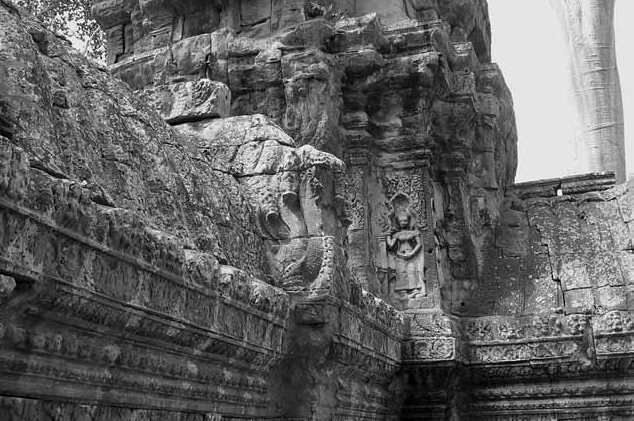Serpents in Angkor, Apotheosis of a Decorative Motif
by Adalbert J. Gail
The Ananta serpent of Hindi origin and the Khmer Naga motifs in Angkorian sculptures and ornaments.

Publication: Pandanus (Publication of Charles University in Prague), Vol. 6, No. 2
Published: 2012
Author: Adalbert J. Gail
Pages: 194
Language : English
pdf 11.4 MB
This masterful study leads us through the origins of the serpent sculptural motifs in Angkorian sculpture and architecture.
While the ‘Naga’ figure definitely belongs to pre-Angkorian myths and representations, the author shows how it intertwined with another serpent-like figure — the ‘Ananta’, multi-headed serpent on which Vishnu reclines during the World’s Creation. In this position, the Hindu god is referred to as Anantashayana Vishnu.
Here is a sample of the minitious analyzis applied to sculptural ornementation in Angkor (and Banteay Samre): “At the core of the Angkor Wat temple, on its western side, there is a cross-shaped gallery with four paved basins. A lintel of the south-north axis portrays on the southern side, looking to the north, the Anantaśayana event. The body of the serpent is stretched out on a socle, the wavy incisions of which indicate water. The five canopies of the cobra correspond to the upraised tail on the other side. Viṣṇu himself holds cakra (lower right), and gadā (upper left), while the upper right hand supports his head and the lower left is extended towards Lakṣmī who takes care of his feet with her left arm. The upwards directed lotus stalk is preserved. The figure of Brahmā, however, is destroyed. Two pairs of bearded ascetics, sitting beneath trees, worship Viṣṇu from both sides.”
Photo: Naga forms as antefix on Angkor Wat corniches (from the study).
The publication is richly illustrated with detail photographs.
More on the Reclining Vishnu: « Représentations khmères de Visnu couché », Arts asiatiques, 1965.
Tags: naga, ananta, sculpture, Hinduism, Khmer architecture
About the Author

Adalbert J. Gail
A scholar in Hindu studies, Sanskrit scriptures and Iconographic History, Adalbert Gail has published several studies on Hindu and Buddhist mythology, South Asian and Khmer arts.
Professor emeritus Dr. Gail held the chair on History of Indian Art at Freie Universität Berlin until his retirement in 2006. He remains one of the leading experts in the field of Indian art and archaeology. He visited and worked in Angkor several times between 2007 and 2012. He is also the co-founder of the Center for Jaina Studies, Berlin.

